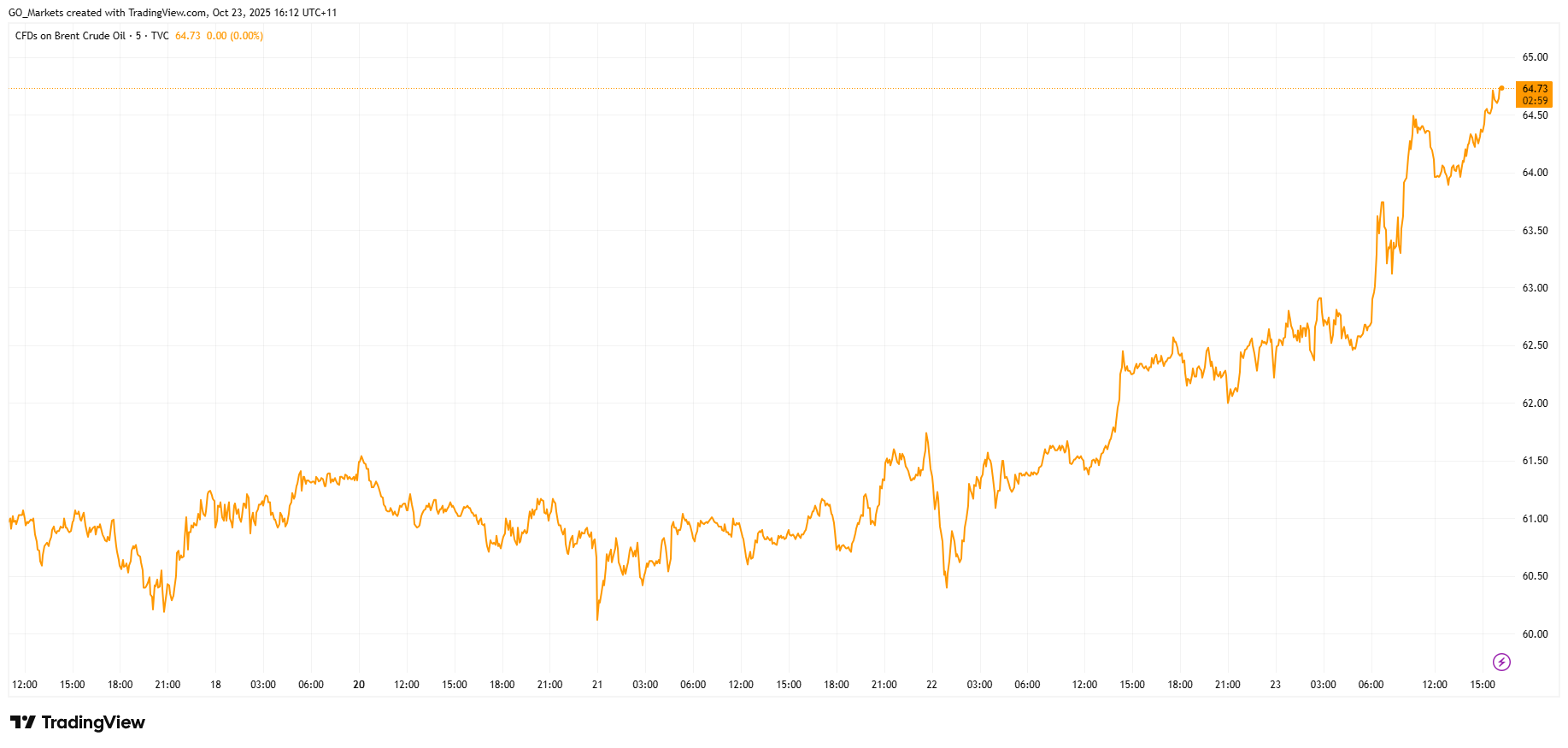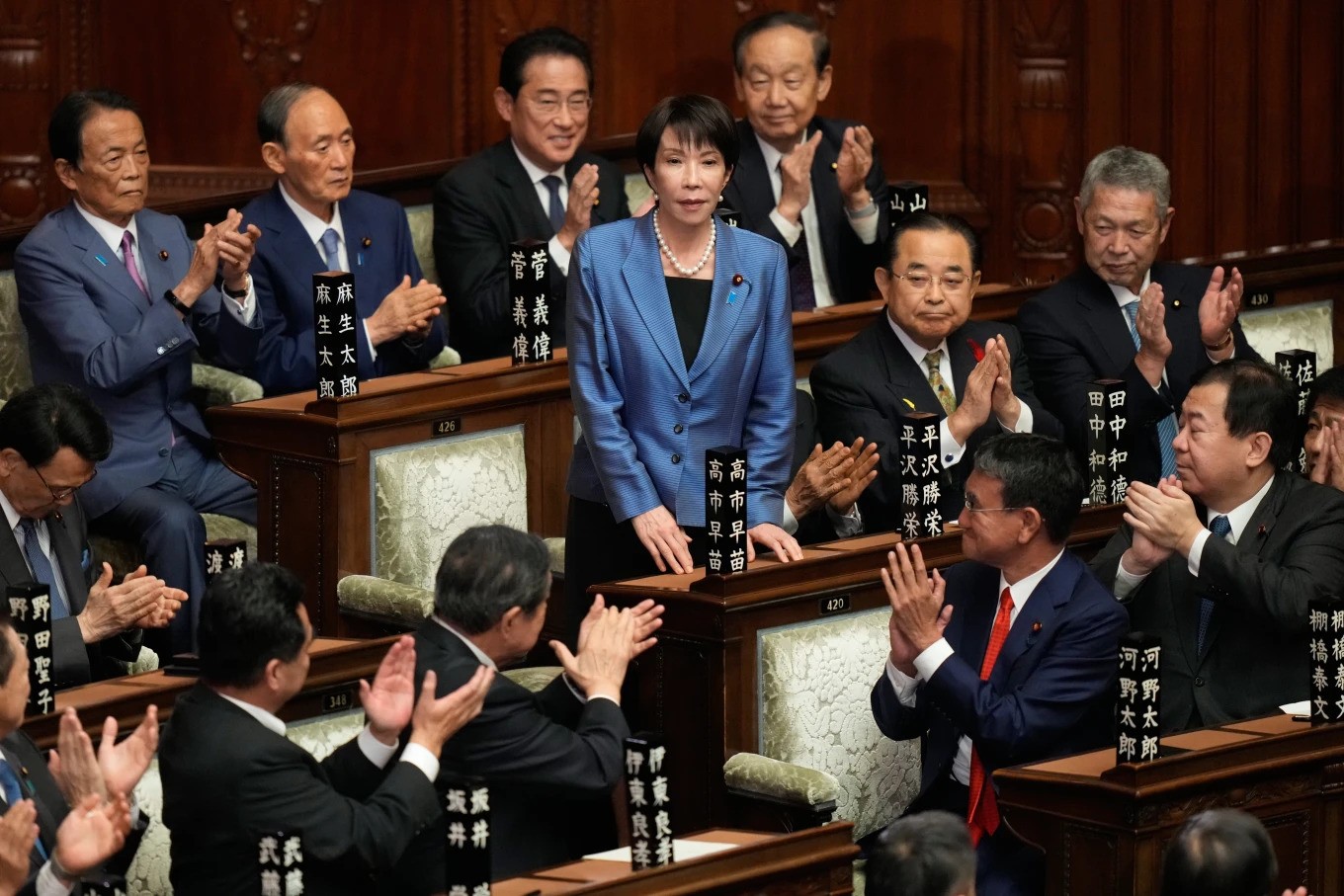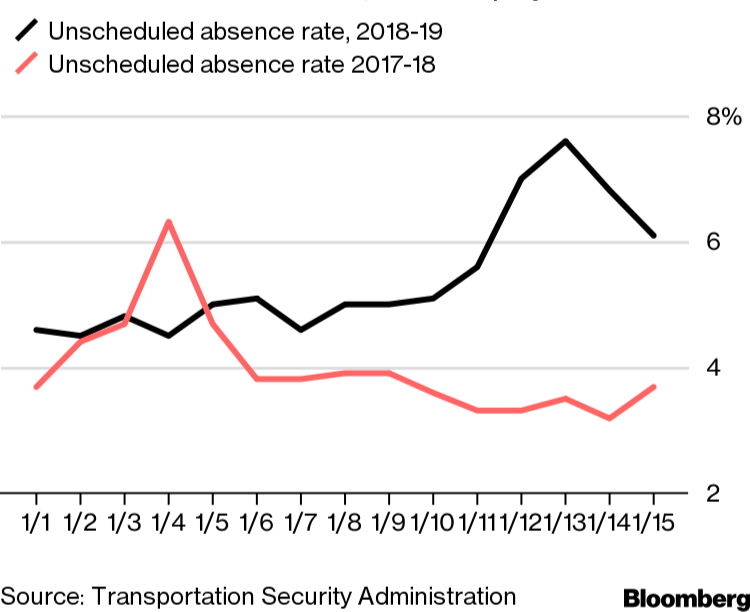市场资讯及洞察
%20(1)%20(1).jpg)
President Trump and President Xi have scheduled talks for later this week in South Korea, marking their first face-to-face meeting since Trump's return to office. After two weeks of heightened tension, a preliminary framework was established that effectively takes the threatened 100% tariffs off the table.
Treasury Secretary Scott Bessent characterised the framework agreement as being "very successful." This diplomatic progress has created some optimism across markets that the world's two largest economies can avoid the deeper trade conflict that was threatening to destabilise supply chains and accelerate inflation.
Copper Tests Key Resistance
Following a dramatic Q3 that saw prices surge to a record high of $5.81 in July, before plummeting to $4.37 by early August, copper has been steadily recovering as supply fundamentals reassert themselves.
Since breaking through $5.00 in early October, prices have continued to gain strength, rising to $5.11 on October 9. Today's gap higher on trade talk optimism pushed prices back to this key technical level that has proven resistant since March.
A confirmed breakout above $5.24 could open the door to $5.50 and potentially higher, making copper worth watching closely this week as both supply constraints and improving US-China trade relations provide potential tailwinds.
Fed Rate Decision This Week
The Federal Reserve will meet this Wednesday for the October 28-29 policy meeting, with a quarter-point rate cut seemingly fully priced in by markets. Market pricing indicates a 100% probability of an October cut and an 88% chance of another reduction in December.
The key moment will come after the meeting during Fed Chair Powell's press conference — particularly on what he has to say about future rate policy and how the Fed views the balance of risks between inflation and employment.
Market Insights
Watch the latest video from Mike Smith for the week ahead in markets.
Key economic events
Stay up to date with the key economic events for the week.

.jpg)

相信你一定被最近网络上关于中国调整美国大豆采购的新闻所吸引过。有人认为,中国在大豆问题上通过贸易策略掌握了主动权;也有人觉得,美国作为全球经济强国,其产业体系足够分散,不会因单一农产品受到太大影响。而今年中国减少美国大豆采购以来,巴西的出口迅速增长,也引起了市场的关注。究竟为何中美之间会因为一颗小小的豆子而牵动如此复杂的局面?时间要拨回到20多年前。
我们知道,在农产品中,大豆具有较高的经济价值,不仅是粮食作物,同时也是榨油及饲料的重要原材料。约25年前,中国加入世界贸易组织,美国在农产品开放方面提出了一系列条件,其中就包括大豆进口市场的放开。对中国而言,加入世贸组织带来了巨大的机遇与市场,因此贸易开放是当时的重要战略选择。但也正因为如此,中国农业市场随后经历了一段价格波动与结构调整期。
随着市场开放,美国企业通过期货市场的价格操作与市场预期传播,推高了大豆价格,导致部分油企在高价采购后因价格下跌而承受损失。部分中小企业因此面临经营压力,而外资企业趁机进入市场,收购优质农业资产。这一系列市场行为使中国认识到提升自主调控能力的重要性。此后,中国在粮食储备和战略布局上逐步完善体系,以应对全球市场的波动。
在此背景下,中国积极寻求第三方大豆供应来源,包括推动南美国家在港口、运输及农业技术等方面的合作与建设。这种合作不仅带动了当地经济发展,也为中国建立了更加稳定的进口渠道。今年南美地区气候良好,巴西大豆产量充足,两国之间的贸易往来更加频繁。
另一方面,美国大豆产业并未因此陷入长期困境。约有10%左右的农户使用期货工具对冲价格风险,约八到九成生产商则通过农业保险保障收益。由于期货市场的杠杆较高、风险较大,多数农户更倾向于稳妥的方式,并享受联邦层面的政策支持。保险公司则利用期货市场的空头头寸来进行风险管理。
总体来看,中国通过长期储备、供应链多元化以及金融风险管理手段,在国际农产品市场中增强了稳定性与抗风险能力。美国农业则凭借成熟的金融体系与保险机制维持了生产韧性。未来,中美在农产品领域的竞争与合作仍将并存,而大豆贸易正是这一全球化博弈的缩影。
免责声明:GO Markets 分析师或外部发言人提供的信息基于其独立分析或个人经验。所表达的观点或交易风格仅代表其个人;并不代表 GO Markets 的观点或立场。
联系方式:
墨尔本 03 8658 0603
悉尼 02 9188 0418
中国地区(中文) 400 120 8537
中国地区(英文) +248 4 671 903


You have just identified a breakout above $50 resistance that historically wins 65% of the time — with a degree of confidence, you decide to take the trade.
Minutes later, the market starts to stall. Volume fades, price begins to hesitate, and eventually, your stop loss is hit, leaving you to wonder why your “65% setup” didn’t work.
The root cause of what happened is not your setup, but rather the fact that you assume that the probability of a specific trade outcome stays constant after entry.
This assumption locks you into a “static probability trap.”
There is a tendency to treat probability as frozen in time after entering a trade, when in practice it shifts continuously throughout the life of a trade as new evidence enters the market.
Even if this new evidence may not be particularly dramatic, it can still have profound implications for the likelihood of a continuation of current sentiment and price action.
Unconditional Probability: Your Pre-trade State.
What you can rely on as part of your pre-entry decision-making is unconditional probability.
This is your measured historical performance of a setup under similar conditions. It is your expected win rate and previous evidence of hitting a take-profit level.
The pre-trade belief that “This pattern works 60% of the time” is a backward-looking statement, and although based on some evidence, it shapes your belief about how this type of setup behaves on average.
However, as soon as you enter, the truth is that you are no longer dealing with a statistical average, but with this specific trade, unfolding before your eyes in this market environment, right now.
Conditional Probability: After You Enter
Once in the trade, your question becomes “Given what’s happening now with current price movement, volume, time, and volatility, what’s the probability of success?”
This live review of your pre-trade expectation is the conditional probability — your new probability estimate conditioned on the actual market response that is unfolding.
Each new candle, volume shift, or volatility change is new information, irrespective of the underlying cause, and information changes probability.
You are looking to see if:
- Trading volume is confirming or rejecting your entry expectations.
- If “time in the trade” supports further price moves in your favour or decay in market enthusiasm, evidenced in a drop in momentum.
- There are volatility changes that may be indicative of market sentiment accelerating or rejecting the initial move.
This is all about you recognising that some of these changes may result in adverse price moves. Having timely interventions that aim to protect capital and not donate much of your profit back to the market.
Emotional Resistance to Conditional Probability Thinking
As with many trading situations, there is a psychological component of decision-making that can get in the way.
Emotional “demons” that may influence this may briefly include the following:
- Anchoring: “I have done my analysis — it should work.”
- Sunk-Cost Bias: “I’m already in, I might as well wait and see what happens next.”
- Ego: Some may view that exiting means admitting they were wrong.
- Lack of knowledge: “I don’t know how to update probabilities or take appropriate actions.”
- FOMO (fear of missing out): “What if I exit and then runs in my favour?”
These biases keep traders fixed at entry from mental, emotional, and statistical perspectives.
Updating Probability in Real Time
When you boil it all down into absolute core principles, three critical factors dominate the “in the trade” probability landscape after trade entry.
1. Trading Volume — Conviction or Rejection
Volume is the purest signal of conviction. It shows the strength behind the move and how much belief the market has in your trade direction.
- High volume in your direction = strong confirmation; probability rises.
- Fading or below-average volume = weak conviction; probability erodes.
- High volume against you = rejection; probability collapses.
You can think of volume as your real-time market feedback gauge. It is the purest real-time evidence, in combination with price, of what other traders are thinking.
When price and volume disagree, this is a signal that the odds may (or already have) changed.
2. Time Elapsed — Pattern Decay
Every trade setup has a shelf life. A breakout that has not moved after a few candles can become statistically weaker than one that fired almost immediately.
The potential scenarios are:
- Quick follow-through: expected behaviour; your entry probability is likely to be intact.
- Extended stagnation: increasing probability decay due to trades losing confidence in the trade direction
- Delayed reversal: final evidence of pattern failure.
Each candle that passes without confirmation can be viewed as a ‘vote’ against your trade from the market.
This dissuades further trading interest in your desired direction, as opposed to when a market is enthused and buying seems to create ever-increasing interest as those who are fearful of missing out jump on board.
3. Volatility Regime — The Environment Shift
Volatility defines your market environment, and this environment can change fast.
- Volatility expansion in your favour confirms momentum; the probability of desirable and expected outcomes increases.
- Volatility expansion against you suggests a potential structural shift in the market, resulting in a fast drop in probability.
- Volatility contraction suggests market consolidation or exhaustion. This may be seen as a flattening of price action and a move from strongly directional to a more neutral price move.
Volatility regime shifts are a potential market indication that “the game when you entered is no longer the same.”
Putting It All into Practice: Your End-of-Candle Review
Managing conditional probability doesn’t mean reacting to every tick. It is formalising a systemised reassessment at defined intervals, often doing an “End-of-Candle Review”, on your chosen trading timeframe as a start point.
At the close of each bar on your trading timeframe, you need to pause and ask the following key questions:
- Has price behaved as expected?
- Yes → maintain or increase confidence.
- No → reduce exposure or prepare to exit.
- Is volume confirming or fading?
- Rising with direction → edge intact.
- Falling or reversing → edge weakening.
- Is volatility expanding or contracting?
- Expanding in your favour → stay the course.
- Contracting or reversing → reassess.
- Has too much time passed without progress?
- Yes → probability decay in play; consider exiting or scaling out.
- What’s the appropriate action?
- Hold, reduce, tighten, or exit — but always act in alignment with the evidence.
This simple routine keeps your decision-making informed by data, adaptable to market change, and unemotional.
None of the above is particularly ‘rocket science,’ but as with most things in your trading, it will require some work at the front end.
Measure the “what if” scenario against previous trades and comparatively measure your old way versus your new system over time to allow for confirmation of this as an approach, but also to allow refinement based on evidence.
Final thoughts
The probability of a trading outcome in a single trade is never static. It evolves with every candle, every shift in volume, and every minute of market time as new information is released.
It does require a mindset shift. As traders, we need to move from the standard “It’s a 65% setup, so I’ll hold.” To an approach that adopts the approach of “It was a 65% setup on entry, but what is the market evidence suggesting now?”
You are reacting to evolving information, and effective probability management becomes something beyond having one good trade (or avoiding a bad one) that compounds small improvement over hundreds of trades into measurable performance.
.jpg)

量子计算:和平年代的“核武器”,以及赛道上的7大玩家
提到“核武器”,大家想到的是改变战争格局的终极威慑力;而在没有硝烟的和平年代,量子计算正成为新的“战略王牌”。
它不靠爆炸力,而是靠指数级算力重塑科技、经济、安全的底层逻辑。谁先掌握它,谁就能在新药研发、信息安全、新能源等领域抢占先机。
这是一场没有硝烟的“量子军备竞赛”,而谷歌、IONQ等公司,就是这场战争的主角。
一、为什么说量子计算是和平时期的“核武器”?
普通电脑像“单线程快递员”,一次只送一件包裹;
量子计算靠“量子比特分身术”,能同时处理海量信息——10个量子比特就能同时计算1024种状态。
这种差距,不是“快一点”,而是“维度不同”:就像骑自行车去追火箭。
它能干的事堪称“颠覆级”:
· 破解银行、互联网加密系统(别人算几百年,它几小时搞定)
· 模拟分子结构加速药物研发(几年缩成几个月)
· 优化交通、金融、能源系统(让全球效率更高)
所以,谁掌握量子计算,谁就能制定未来的技术规则和安全标准。这份话语权,正如核武器之于国家安全一样。
二、赛道上的7大玩家:谁在领跑?
1. 谷歌(GOOGL)——超导路线的“火箭选手”
谷歌是量子计算的顶流。
它的超导芯片“Willow”已经做到105个量子比特,速度比全球最快超算还快1.3万倍。
它能计算分子结构,加速新能源电池和抗癌药研发。
谷歌放话:5年内实现实用化应用。
短板也有:超导量子比特太“娇气”,要放在比南极还冷几百倍的环境里,目前还只能处理特定任务。但作为科技巨头,谷歌的资源和研发速度,让它仍是最有可能先造出“量子核武”的玩家。
2. IONQ——离子阱路线的“精密工匠”
IONQ用激光“抓住”带电原子作为量子比特,精度极高、错误率低。
它靠32个量子比特就宣称实现“量子优越性”,比谷歌还早一步。
现在专攻“量子纠错”,让运算更稳定,是迈向实用的关键。
缺点是难以扩展,加一个比特像往积木塔上叠块砖,容易影响整体。
但在科研模拟、精密计算等领域,它的“精准”优势明显,有望后来居上。
3. 霍尼韦尔(HON)——幕后“装备大佬”
霍尼韦尔虽然不出风头,但它的子公司Quantinuum是离子阱路线的中坚力量。
更重要的是,霍尼韦尔的激光器、制冷系统、测控设备,是全球量子实验室的标配。
它是量子领域的“军工厂”,不造火箭,但造发动机。
在未来的产业链中,它是所有玩家都离不开的“幕后功臣”。
4. QUBT——专做“量子安全”的锁匠
QUBT不做量子计算机,而是做防量子破解的安全加密。
它利用量子技术生成不可预测的密钥,给数据上“防量子锁”。
银行、政府机构已经在用它的产品。
未来量子计算能破解传统加密,而QUBT的锁正是抵御“量子黑客”的盾牌。
算是最贴近普通人生活、最早能变现的应用方向。
5. QBTS——“软件+硬件”的小众探索者
QBTS采用特殊的核磁共振技术,在常温环境下也能运行,不用极冷设备。
目前算力较弱,主要帮企业做物流规划、路线优化等小型任务。
虽然不是“超级计算怪兽”,但胜在灵活低成本,可能在特定场景率先落地。
6. Rigetti(RGTI)——被巨头甩开的追赶者
RGTI走超导路线,推出过80比特设备,但进展放缓。
现在主攻“量子云平台”,让企业租算力做实验。
只是面对谷歌、IBM的强势,它的技术差距越来越大,市场声音也逐渐变弱。
7. Laser Photonics(LAES)——“量子副业”的蹭热股
LAES主业是激光设备,量子只是“副业”。
偶尔宣布要搞“光量子技术”,但没有实际芯片或数据。
目前更像是“站在量子赛道边上的观察员”,未来潜力有待验证。
三、我们应该关注什么?
不能以为这只是科研人员的游戏。量子计算未来影响的是你我的生活:新药更快上市,电动车续航更高,网络支付更安全,物流更智能。
如果要关注投资方向或应用落地:
谷歌:技术最强、速度最快,五年内可能看到实用成果;
IONQ:纠错领先,科研和精密行业潜力大;
QUBT:防量子黑客的“安全护盾”,最贴近现实场景。
四、结语:量子“军备竞赛”才刚开始
量子计算不是“更快的电脑”,而是和平年代的核武器。它决定未来科技的主导权,也重塑国家竞争格局。
现在的玩家,有的快、有的稳、有的专,但真正的胜者,取决于谁能先跨过“纠错”和“可扩展”这两道坎。
十年后,你用的药、开的车、上的网,背后可能都有量子计算的力量。这场“无声的军备竞赛”,正在改变人类的未来。


New U.S. Sanctions on Russia as Putin Conducts Nuclear Tests
The U.S. has imposed new sanctions on Russia's two largest oil companies, Rosneft and Lukoil, after planned peace talks between Trump and Putin collapsed on Wednesday.
Oil prices spiked 3% after the announcement, with Brent crude hitting $64 per barrel.

The targeted companies are among the world's largest energy exporters, collectively shipping about three million barrels of oil daily and accounting for nearly half of Russian production.
The sanctions build on recent European measures, as the UK targeted the same companies last week and the EU approved its own sanctions package on Wednesday.
In a show of force coinciding with the new sanctions, Putin supervised strategic nuclear exercises on Wednesday involving intercontinental ballistic missile launches from land and submarine platforms.
While the Kremlin emphasised these were routine drills, the highly coincidental timing is notable.
For markets, the key question now is whether secondary sanctions will follow, and if Trump’s enforcement remains strict. Traders will watch closely for any TACO signals that see Trump ease pressure in an attempt to restart negotiations.
Historic PM Wasting No Time on Celebrations
Sanae Takaichi made history this week as Japan's first female Prime Minister. The 64-year-old conservative leader, dubbed the "Iron Lady,” is already rolling out an aggressive policy agenda that could reshape Japan's economic and geopolitical position.
Her first major move is an economic stimulus package expected to exceed US $92 billion. The package includes abolishing the provisional gasoline tax and raising the tax-free income threshold from ¥1.03 million ($6,800), moves designed to put more money in consumers' pockets and battle inflation.

Her next move will come when Trump arrives in Tokyo next week, as the Japanese government is finalising a purchase package including Ford F-150 pickup trucks, US soybeans, and liquefied natural gas as sweeteners for trade talks.
Takaichi has campaigned on being a champion for expansionary fiscal policy, monetary easing, and heavy government investment in strategic sectors, including AI, semiconductors, biotechnology, and defence.
Critical Workers to Miss First Paycheck Due to Shutdown
The U.S. government shutdown is on the verge of creating a crisis for aviation safety, with 60,000 workers set to miss their first full paycheck this week.
These essential workers, who earn an average of $40,000 annually, already saw shortened paychecks last week. By Thursday, many will receive pay stubs showing zero compensation for the coming period, forcing impossible choices between basic necessities and reporting to work.
During the last extended shutdown, TSA sick-call rates tripled by Day 31, causing major delays at checkpoints and reduced air traffic in major hubs like New York — disruptions which are directly attributed to pressuring the end of the previous shutdown.

The National Air Traffic Controllers Association warns that similar pressures are building, with many workers soon to be facing a decision between attending their shift or putting food on the table.
.jpg)

10月21日收盘,贵金属市场出现明显回调。伦敦现货黄金盘中最低跌至4002美元/盎司,沪金(au7777)下跌4.75%,报943.3元/克,创下2013年以来最大单日跌幅。全球黄金股和金矿股同步下挫,美股的GLD、GDX下跌约5%,国内的山东黄金、中金黄金、赤峰黄金等个股跌幅均接近或超过4%。
此前两个月,黄金价格持续上行,主要受美国政府关门风险、贸易摩擦升温以及各国央行增持黄金等因素推动。然而,10月21日欧洲多国领导人发表联合声明,支持通过谈判推动俄乌停火,市场由此预期地缘政治风险可能缓和,避险需求下降,金价随即转为下行。
同时,前期涨幅过快积累了较多获利盘。黄金价格一度接近4400美元/盎司,短期内出现明显超买迹象,于10月中旬成为全球最高市值的资产大类。

部分投资者选择在高位获利了结。美元指数的短期反弹也对黄金形成一定压力,资金流向出现调整。
白银市场的波动更加明显。白银期货单日下跌超过7%,为十余年来最大跌幅。本轮白银上涨行情始于10月初,期间价格突破50美元关口,现货市场短缺、租赁利率飙升等因素推动价格快速上升。随着逼空行情结束,投机性资金回撤,银价在短时间内大幅回落,几乎回吐了此前两周的涨幅。
除地缘政治变化外,技术性和结构性因素也在加速调整。美国政府临时关门导致持仓数据缺失,市场对投机性多头头寸规模缺乏清晰判断,放大了价格波动。印度节日季买需阶段性结束,亚洲实物黄金买盘减少,也在一定程度上削弱了现货支撑。
从市场结构来看,此次调整具有阶段性特征。过去几周,黄金、白银、美股以及美元指数同步上涨的格局本身较为罕见,显示资金短期内对不同资产类别的配置逻辑出现错位。随着避险情绪减弱和美元走强,贵金属市场的价格修正属于正常的回归过程。
白银走势的变化具有代表性。10月9日突破50美元后,市场情绪高涨,资金迅速集中于贵金属板块,印度主要节日集中在10-11月,也对于白银买盘形成强烈支撑。但从10月13日开始,随着供需关系趋于平衡、逼空行情缓解和印度节日季的传统买盘在月中逐渐告一段落,白银上涨动能减弱。本轮回调主要体现为市场在高波动阶段的自然降温。

国际投行对后续走势看法不一。花旗银行维持金价4000美元的中期目标,认为在回调后实物买盘可能重新介入,从而限制下行空间。瑞银则认为短期市场仍由期货抛售主导,现货需求疲弱使金价在短期内可能继续承压。
总体来看,当前贵金属市场的波动更多反映资金面和情绪面的调整,而非基本面的根本性转变。短期内,金价预计在高位震荡,中期走势仍取决于美国经济数据、通胀预期以及美联储的货币政策方向,请大家重点关注即将到来的周五美国CPI、下周美联储FOMC会议和11月份中美贸易谈判进展,都会对黄金价格造成一定影响。
从历史经验看,黄金在快速上涨后出现短期调整并不罕见。价格修正往往有助于市场重新建立平衡。未来若全球经济不确定性仍然较高,或通胀压力再度上升,黄金仍具备重新获得支撑的可能。

对于投资者而言,当前阶段的重点在于关注宏观数据变化和政策信号,而非追逐短线波动。黄金作为资产配置的一部分,其中长期价值仍需结合全球经济走势与货币环境综合判断。
.jpg)

本周全球市场情绪偏谨慎,投资者关注即将发布的重要经济数据和企业财报,同时也在重新评估对美联储降息的预期。
美国市场
美国股市方面,周一表现出强劲反弹势头,三大指数齐涨。标普500指数上涨约1.1%,道琼斯工业平均指数与纳斯达克综合指数分别上涨1.1%与1.4%,凸显科技股与大型蓝筹股的带动作用。科技板块中,苹果因 iPhone 销售表现强劲上涨近4%,而英伟达则凭借其新一代芯片发布受到关注,提振整体科技板块人气。
与此同时,10 年期美债收益率上升至 4.68%,为近两周新高,显示投资者在经济数据与通胀预期交织下重新评估美联储的政策路径。收益率走高提振美元表现,并强化其避险吸引力,推动美元指数重回106上方。受此影响,商品货币普遍承压,澳元与纽元兑美元均小幅下挫。
投资者对于即将发布的财报季保持关注。与此同时,美国与中国贸易关系出现缓和迹象,带动市场情绪回暖,但部分投资者担忧政策不确定性仍存,或在短期内引发波动。总体而言,美股反弹体现出资金对科技板块的信心,但在高利率与强美元环境下,市场仍处于谨慎乐观的阶段。
澳大利亚市场
澳大利亚股市 ASX200 指数下跌 0.8%,铁矿石价格回落至 106 美元 / 吨,必和必拓(BHP)和力拓(RIO)等矿业股对大盘构成拖累。澳大利亚统计局(ABS)数据显示,9 月份失业率升至 4.5%,为 2021 年 11 月以来最高水平,表明劳动力市场有所放缓。这一数据使得市场对澳大利亚储备银行(RBA)未来降息的预期升温。澳元兑美元汇率一度短暂反弹,但随后受到美元强势的限制,目前在 0.652 附近交易。
数字货币市场
数字货币市场延续震荡走势。本月 10 日,由于地缘政治与中美贸易紧张情绪回升,数字货币市场出现剧烈波动。全球最大数字货币比特币日内跌幅超过10%,全球总市值缩水约 190 亿美元(约合人民币 2400 亿元),比特币短线跌破10.6万美元关口,以太坊亦失守3800美元一线。
随后,随着投资者逢低买入及部分机构资金回流,市值有所回升,重新回涨至11万美元。市场普遍认为,在宏观经济不确定性与监管风险并存的背景下,数字资产短期内仍难以摆脱高波动特征。投资者可关注美国 SEC 对数字货币 ETF 审批进展,以及美债收益率变化对市场资金流向的影响。整体而言,市场情绪依然偏谨慎,投资者应保持理性并密切关注宏观经济与政策变化。
大宗商品市场
大宗商品方面,避险需求推动贵金属价格走高。近期黄金价格成为市场关注焦点,一度突破两个月新高,达到每盎司 4381 美元,避险买盘明显增加。这反映出市场对地缘政治风险与全球经济放缓的担忧加深。现货黄金价格突破4100美元/千克关口后虽略有回落,但仍处于强势区间,资金持续流入黄金ETF产品,显示避险情绪仍然高涨。
白银走势同步跟随黄金上涨,受工业与避险双重属性支撑,涨幅略优于黄金。原油价格较月初高点明显回落,主要受库存回升和需求疲软影响。短期内油价或维持区间震荡格局。若美国后续公布的通胀与就业数据继续走弱,黄金有望延续上行趋势;但若美债收益率再度攀升,金价短线或面临技术性调整压力。
总结
总体来看,全球市场情绪转趋谨慎,投资者在等待关键经济数据与企业财报结果之际,避险情绪上升。美元的持续强势与美债收益率的上升,对新兴市场与商品货币构成一定压力。与此同时,避险情绪推动黄金与白银走强,显示市场对宏观与地缘风险的防御需求仍在。油价回调则反映出市场对经济增长放缓的担忧。随着本周欧美多项经济数据及主要科技企业财报即将公布,市场波动或将加剧。投资者普遍关注美联储官员的最新言论,以判断降息周期启动时点。整体而言,短期市场走势将受到经济数据、收益率变化及政策预期的共同影响。在当前环境下,资产配置策略宜保持灵活,防御性与成长型板块可适度平衡,以应对潜在的不确定性与市场波动风险。
免责声明:GO Markets 分析师或外部发言人提供的信息基于其独立分析或个人经验。所表达的观点或交易风格仅代表其个人;并不代表 GO Markets 的观点或立场。
联系方式:
墨尔本 03 8658 0603
悉尼 02 9188 0418
中国地区(中文) 400 120 8537中国地区(英文) +248 4 671 903
作者:
Alena Wang | GO Markets 墨尔本中文部

